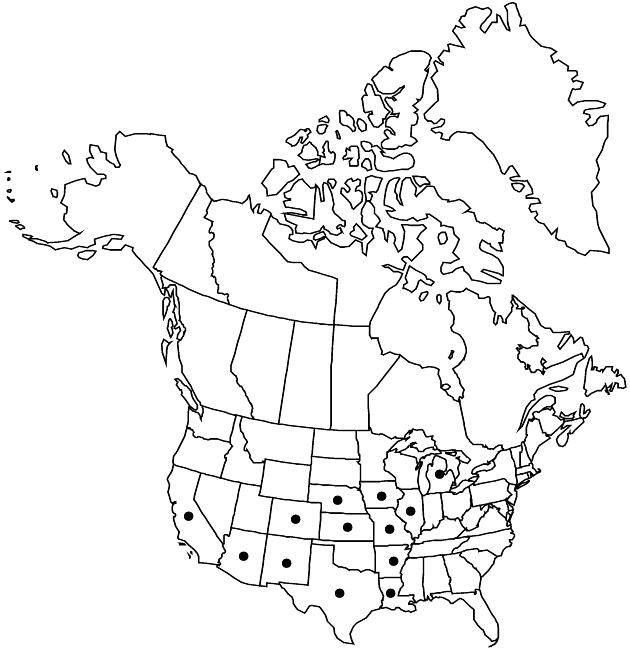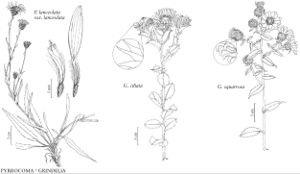Grindelia ciliata
Syst. Veg. 3: 575. 1826.
Annuals or biennials, 20–150+ cm. Stems erect, stramineous, glabrous (branched distally). Cauline leaf-blades oblong to obovate, 30–50 (–80) mm, lengths mostly 2–4 times widths, bases ± clasping, margins dentate (teeth apiculate to setose), apices rounded, faces glabrous, obscurely, if at all, gland-dotted. Heads borne singly or in open to crowded, corymbiform arrays. Involucres broadly urceolate, 10–15 × 15–25 mm. Phyllaries in 3–5 series, spreading to appressed, subulate to linear-lanceolate, apices recurved to straight, attenuate, slightly to moderately resinous. Ray-florets 25–45; laminae 10–15+ mm. Cypselae whitish to grayish, 2–4 mm, apices smooth or minutely coronate, faces smooth or striate; pappi (persistent or tardily falling) of 25–40 barbellate bristles 3–7+ mm subtending 8–15+ barbellate, setiform awns or subulate scales 7–10 mm (the longer surpassing disc corollas). 2n = 12.
Phenology: Flowering Aug–Oct.
Habitat: Disturbed sites, prairies, railroads, roadsides
Elevation: 100–1500 m
Distribution

Ariz., Ark., Calif., Colo., Ill., Iowa, Kans., La., Mich., Mo., Nebr., N.Mex., Okla., Tex.
Discussion
Selected References
None.
